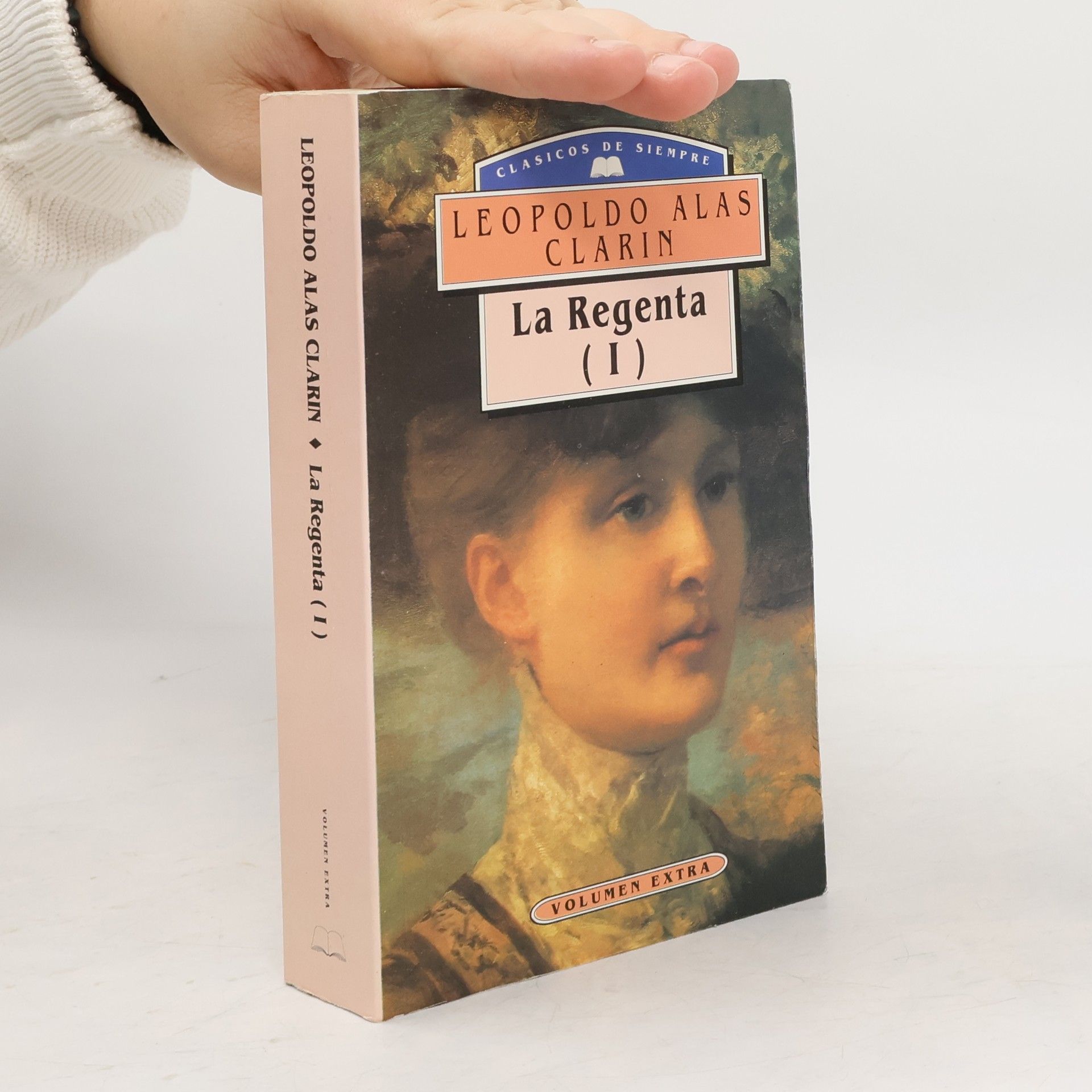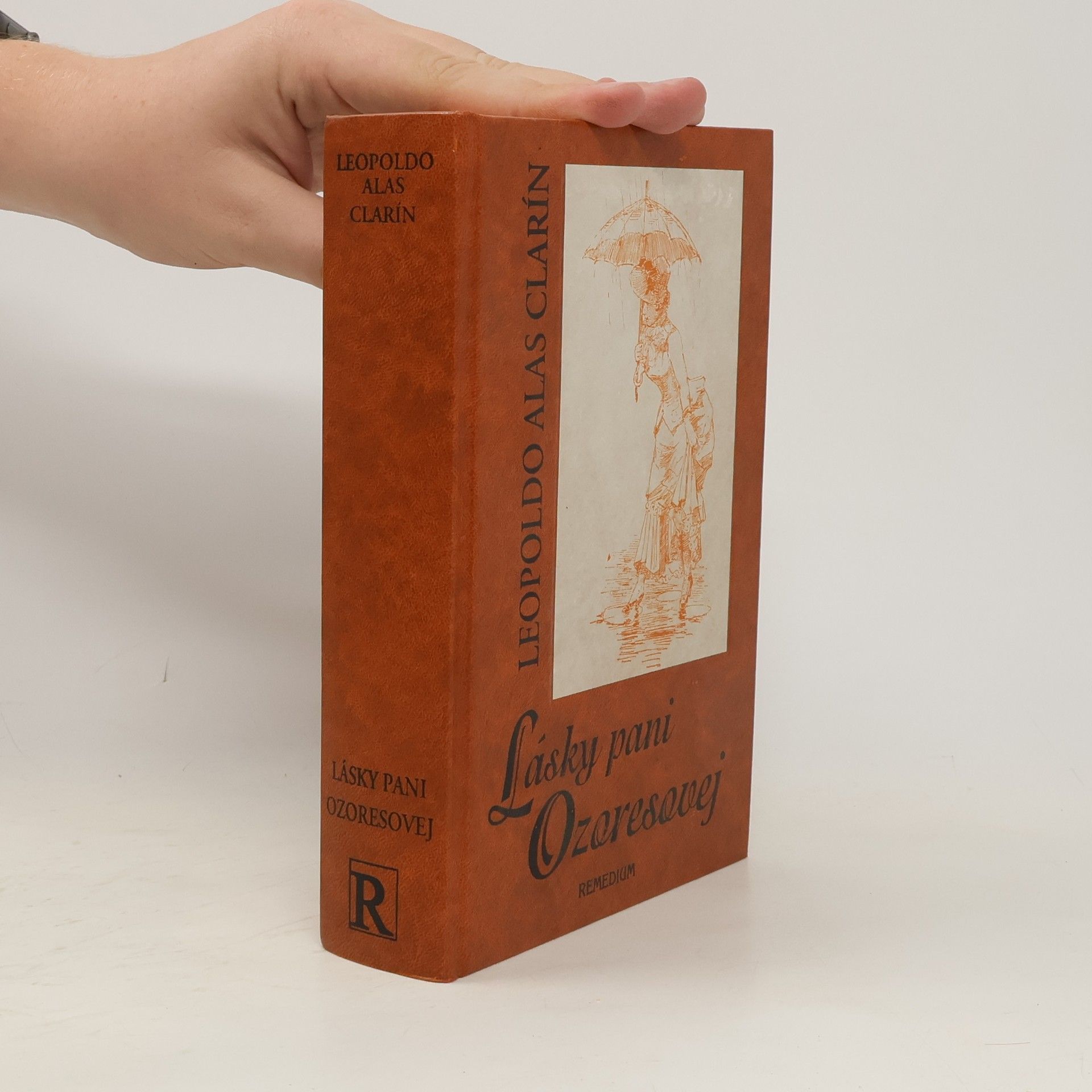La Regenta; Volume 1
- 504bladzijden
- 18 uur lezen
Leopoldo García-Alas, bekend onder zijn pseudoniem Clarín, was een vooraanstaand figuur in het Spaanse realisme. Zijn romans duiken diep in de complexiteit van het provinciale leven en de collectieve psychologie, waarbij hij geavanceerde verteltechnieken gebruikt, zoals de innerlijke monoloog en de vrije indirecte stijl, om lezers onder te dompelen in de intimiteit van zijn personages. Beïnvloed door het Naturalisme en het Krausisme, verkent Claríns werk vaak diepgaande thema's als humanisme en spirituele zoektocht, waardoor zijn schrijven een vruchtbare bodem wordt voor diverse interpretaties en zijn nalatenschap als meesterverteller wordt geconsolideerd.







Ústrednou témou prvého slovenského prekladu románu významného predstaviteľa španielskeho realizmu 19. storočia je cudzoložstvo. Protagonistkou je krásna Anna Ozoresová, dcéra schudobneného šľachtica a talianskej modistky, ktorá zanechá štvorročnú dcérku. Autor situoval dej do Staromesta (v skutočnosti hlavného mesta astúrskej provincie Ovieda). Po nevinnom priateľstve s rybárskym chlapcom Annu nespravodlivo podozrievajú zo skazenosti. Dospievajúca hrdinka prežíva krízu, ale márne hľadá útechu v čítaní náboženskej literatúry a v pohrúžení sa do náboženskej mystiky. Preložil Vladimír Oleríny.
Mladá, krásná a počestná Ana Ozoresová se v manželství se starým soudcem cítí zklamána ve svých erotických a mateřských touhách a hledá naplnění svého života v jiném vztahu. Děj příběhu se odehrává od října 1875 do října 1978 ve společnosti hlavního města provincie Vetusty. Drama je zasazeno do prostředí španělské šlechty atakované již novou buržoazně orientovanou aristokracií.
With its frank sexuality and searing critique of the Church, "La Regenta" scandalized contemporary Spain when it was first published in 1885. Married to the retired magistrate of Vetusta, Ana Ozores cares deeply for her much older husband but feels stifled by the monotony of her life in the shabby and conservative provincial town. When she embarks on a quest for fulfillment through religion and even adultery, a bitter struggle begins between a powerful priest and a would-be Don Juan for the passionate young womanas body and soul. Spainas answer to "Madame Bovary, La Regenta" wittily depicts the complacent and frivolous world of the upper class.
-Doña Berta-El señor-¡Adiós Cordera!-Cambio de luz-El centauro-Rivales-Protesto-La yernocracia-Un viejo verde-Cuento futuro